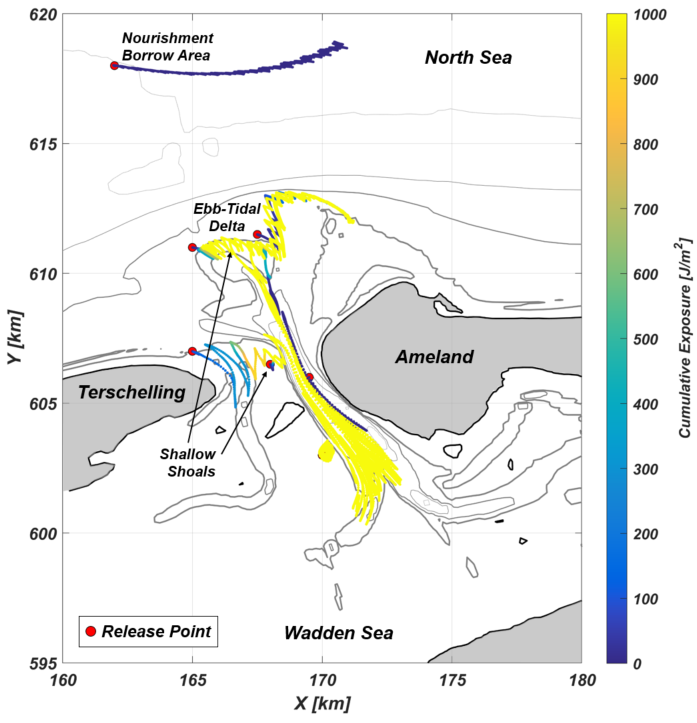S.G. Pearson1*, A.M. de Boer2, T.J. Kooistra3, E.L. Chamberlain2, B.C. van Prooijen1, J. Wallinga2
1 Delft University of Technology; 2 Wageningen University and Research; 3 Royal Netherlands Institute for Sea Research
*corresponding author:
Introduction
To mitigate the threat of coastal flooding and erosion, sand nourishments are commonly employed to preserve coastal sediment buffers. However, keeping track of where these nourished sand grains go and distinguishing them from natural local sediment is still challenging, especially in locations with complex flow and transport patterns (e.g., tidal inlets). Here we propose a new tool for our coastal management toolbox: numerically simulating the exposure of sand grains to sunlight as they travel along the coast. This approach is a first step towards using an intrinsic light-sensitive property called luminescence to track nourished sand.
Methods
We use field measurements from the Dutch Wadden Sea to estimate the relationships between suspended sediment concentration, sand versus mud content, chlorophyll content, and light attenuation as a function of water depth. Our measurements reveal strong differences in suspended sediment concentration and consequent light penetration depending on seasonally varying storminess. These relationships are then introduced into a numerical sediment particle tracking model (SedTRAILS) of Ameland Inlet.
Results
SedTRAILS can then predict the cumulative exposure history of a given sand particle to light. We show that light exposure of sand grains on intertidal flats and shallow shoals is up to three orders of magnitude greater than in deeper areas (e.g., lower shoreface where nourishment sand originates). This model will be complemented by ongoing field experiments to quantify how subaqueous light exposure determines luminescence signal resetting rate of feldspar mineral grains. Together, these components will enable us to better predict luminescence signal resetting rates and hence fate of nourished sand, making a useful tool for more strategic coastal protection.

Figure 1: Example showing modelled cumulative light exposure of sand particles released for 30 days at Ameland Inlet, the Netherlands. Brighter colours indicate greater light exposure but do not yet reflect actual luminescence signal resetting, which will be resolved by ongoing field experiments.
I. Surname1*, F.N. Another-Surname2 , Y. Next-Surname2
1 University Name, Country; 2 Organization Name, Country
* Corresponding author: mail.name@organization.org


